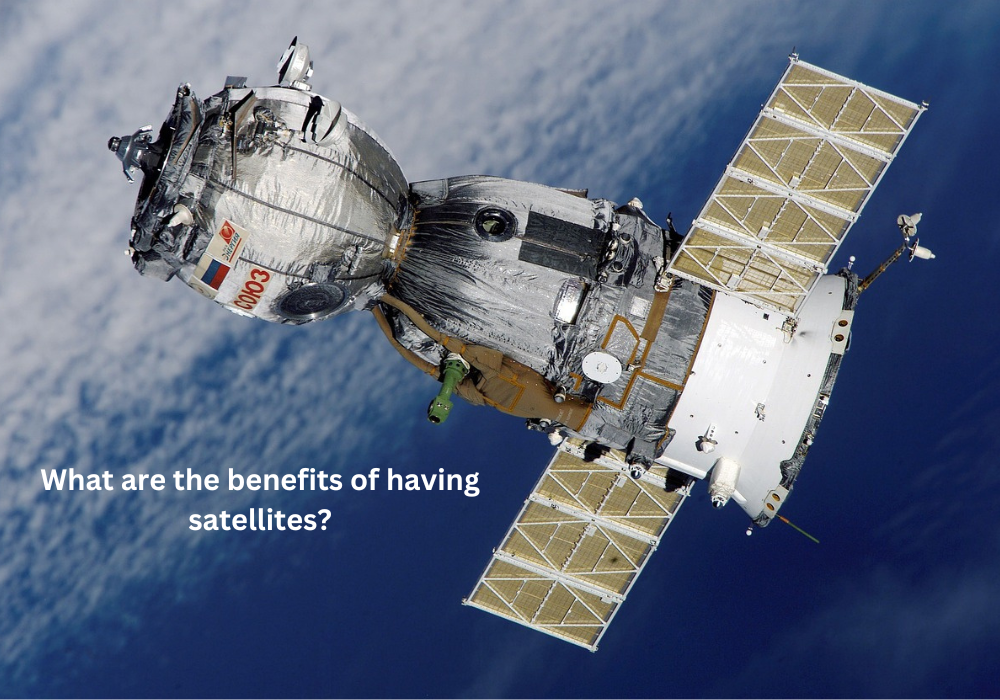This blog post will discuss “What are the benefits of having satellites?” Satellite technology is becoming an essential instrument affecting every area of contemporary life that is changing so quickly. These space wonders have transformed how we communicate with one another and comprehend our planet, from weather predictions to international communications and Earth observation.
Communication and Connectivity
Since satellites have such a wide range and durability, they have completely changed global networking and communication. Even in the most distant areas of the globe, we have increased access to phone, internet, and multimedia information thanks to satellite technology. Attention should be paid to many aspects of satellite connection and communication:
Mobile Services and International Calling
Direct global communication is made possible by satellites, which do not need physical infrastructure. This feature is very helpful in remote and impoverished areas without access to conventional telecommunications infrastructure.
Internet connectivity
By bringing internet connectivity to previously unserved places, satellites enable people and companies to access online tools and services. The goal of new constellations, like those put out by SpaceX and others, is to improve internet coverage around the world.
Distribution of Multimedia Content
Satellites are used by broadcasting services, such as radio and television, to provide content to millions of listeners and viewers. Furthermore, news, sports, and entertainment information are sent to regional audiences via satellites through local hubs.
Applications of the Internet of Things (IoT)
IoT applications are made possible via satellite connection, particularly in distant areas. Satellite technology is used by connected devices, such as sensors and monitoring systems, to interact with central servers and other connected nodes.
Safety and Adaptability
Redundancy and protection against terrestrial threats, including cyberattacks, deliberate sabotage, and natural catastrophes, are provided via satellite communication. During emergencies, this function makes sure that vital services continue.
Navigation and Positioning
Satellite navigation technologies like the Global Location System (GPS) are essential in contemporary navigation and location. These systems use satellites to provide precise geolocation data all around the world. The following are some essential details about satellite location and navigation:
Satellite constellations that transmit location, navigation, and timing data are called global navigation satellite systems (GNSS). Major GNSS systems include the QZSS (Japan), NavIC (India), Galileo (European Union), BeiDou (China), GPS (United States), and GLONASS (Russia).
The U.S. Department of Defense runs the Global Positioning System (GPS), a constellation of satellites circling the planet at a distance of about 11,000 miles. GPS offers precise location, velocity, and time data anywhere and in every weather.
Accurate position monitoring is made possible by satellite navigation systems, which provide autonomous driving, mapping, geospatial analysis, and vehicle navigation. These systems have many industrial uses and are essential to contemporary navigation technology.
By merging data from many satellites and using methods like Kalman filtering to precisely predict location, satellite navigation receivers reduce errors. These systems ensure that positional data is accurate by constantly checking for and fixing mistakes.
Advances in transportation, logistics, surveying, and many other professions have been made possible by the widespread use of satellite navigation systems, which are now essential instruments for accurate location, navigation, and timing in various industries.
Weather Forecasting and Climate Monitoring
Our capacity to predict weather patterns and track climate change has significantly improved due to satellite technology advancements. Satellites record ongoing observations of the Earth’s seas and atmosphere, giving meteorologists and climate scientists invaluable data.
Satellites’ Contributions to Weather Forecasting
More precise weather predictions are made possible by satellites, which provide data on atmospheric conditions in almost real-time.
Global coverage is provided by satellites, which supplement data from airplanes and balloons and close gaps left by ground-based devices.
Scientists can study long-term trends and climate patterns because of satellite data collected over decades.
Satellite Types Used in Weather Prediction
To predict the weather, two main kinds of satellites are used:
Operational environmental satellites that are geostationary maintain a constant location over a specific region while orbiting the Earth at the same speed as the globe. They are perfect for eyeing big land areas because of their steady viewing angle.
On Earth’s axis, polar-orbiting satellites go around and over both poles. As they travel, they collect information on almost the world, offering broad coverage but fewer updates than geostationary satellites.
What are the benefits of having satellites?- Conclusion
As this blog post has shown (What are the benefits of having satellites?), satellites are very valuable to civilization because they provide:
- Better communication.
- Better navigation.
- More accurate weather forecasting.
- A deeper understanding of Earth’s ecosystem.
- Advances in astronomy and space research.
Through persistent innovation and investment in satellite technology, mankind is well-positioned to explore and advance into previously uncharted territories.

